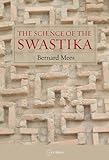The Science of the Swastika / Bernard Mees.
Material type: TextPublisher: Budapest ; New York : Central European University Press, [2022]Copyright date: ©2008Description: 1 online resource (390 p.)Content type:
TextPublisher: Budapest ; New York : Central European University Press, [2022]Copyright date: ©2008Description: 1 online resource (390 p.)Content type: - 9786155211577
- 929.9 22
- DD256.5 .M3975 2008eb
- online - DeGruyter
| Item type | Current library | Call number | URL | Status | Notes | Barcode | |
|---|---|---|---|---|---|---|---|
 eBook
eBook
|
Biblioteca "Angelicum" Pont. Univ. S.Tommaso d'Aquino Nuvola online | online - DeGruyter (Browse shelf(Opens below)) | Online access | Not for loan (Accesso limitato) | Accesso per gli utenti autorizzati / Access for authorized users | (dgr)9786155211577 |
Frontmatter -- Table of Contents -- Preface -- Introduction: “Issues concerning the Teutons” -- Chapter 1. The Tradition of Völkisch Germanism -- Chapter 2. History and Intuition -- Chapter 3. The Origins of Ideographic Studies -- Chapter 4. Germanic Resurgence -- Chapter 5. National Socialism and Antiquity -- Chapter 6. Intellectual Prehistory -- Chapter 7. Academic Responses -- Chapter 8. The Expansion of the Ahnenerbe -- Chapter 9. Into the Academy -- Chapter 10. Epilogue, Aftermath -- Conclusion: The Secret Garden -- Abbreviations -- Picture Credits -- Bibliography -- Index -- Illustrations
restricted access online access with authorization star
http://purl.org/coar/access_right/c_16ec
The first theoretically informed study of the relationship between an academic discipline and what the Nazis termed their Weltanschauung. The first study of Sinnbildforschung, German ideograph or swastika studies, though more broadly it tells the tale of the development of German antiquarian studies (ancient Germanic history, archaeology, anthropology, folklore, historical linguistics and philology) under the influence of radical right wing politics, and the contemporary construction of 'Germanicness' and its role in Nazi thought. The swastika and similar symbols were employed by the ancestors of the modern day Germans. As these had also become emblematic symbols of the forces of German reaction, Sinnbildforschung became intrinsically connected with the National Socialist regime after 1933 and disappeared along with the Third Reich in 1945.
Mode of access: Internet via World Wide Web.
In English.
Description based on online resource; title from PDF title page (publisher's Web site, viewed 29. Jul 2022)


